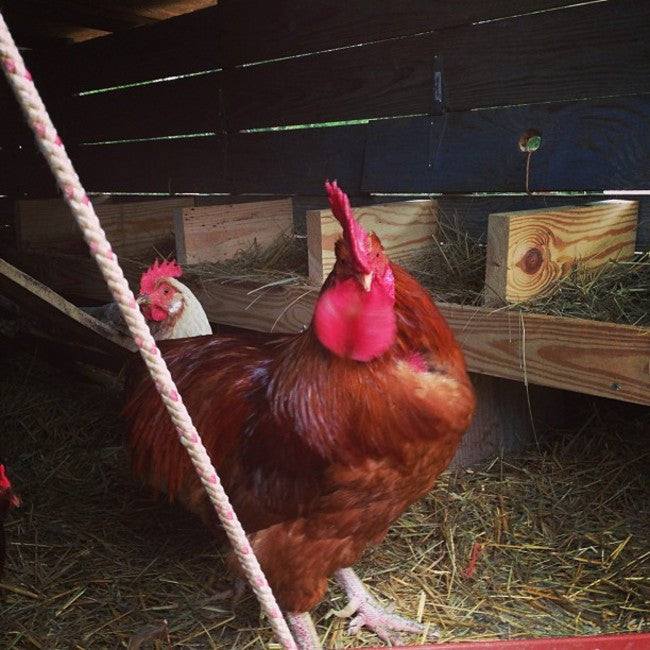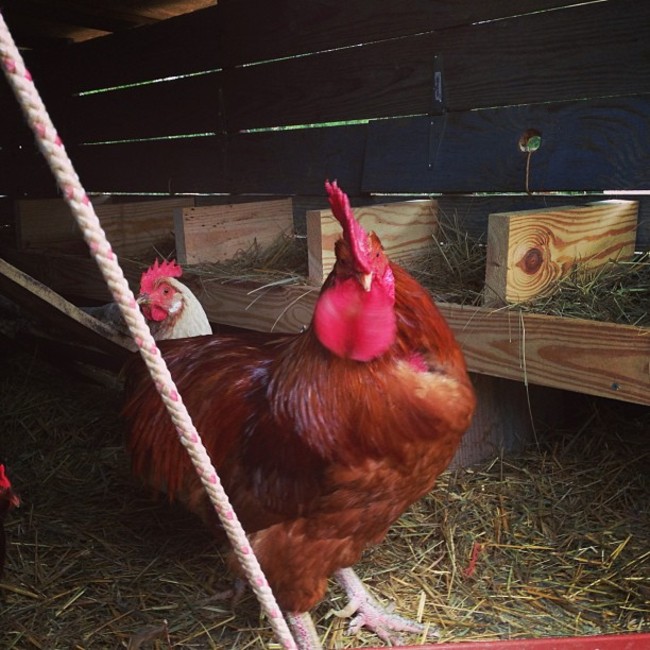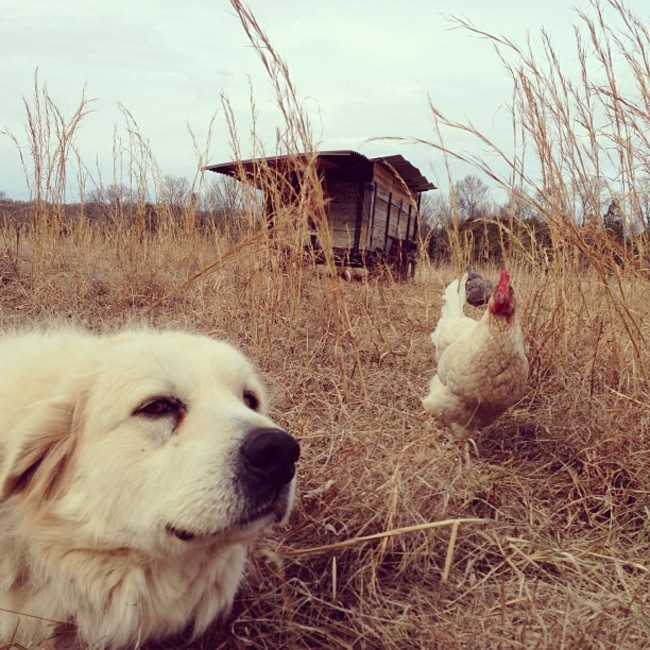
A few weeks ago I posted about the end of the guinea mobile and how we were in the process of transitioning to an official egg mobile with laying chickens and all. A lot of people don't realize that there are specific chickens for laying eggs and specific ones for growing meat. When I say 'laying chickens' I'm talking about the egg layers. In our case, the breeds we have are Wyandottes, Rhode Island Reds, one Black Giant and one Leghorn/RIR cross. A neighbor of ours was looking to reduce his layer flock, so we adopted 11 of his egg laying chickens and 3 of his roosters.
We ate two roosters and kept Axel, who you can see below. He was by far the largest of the roosters, but also the friendliest and so far he's done a great job keeping the hens safe. Whenever I drive by the goat's paddock I see all the hens run under the coop and Axel standing guard in front of them. All the hens follow him around, it's pretty fun to watch. They also have Izzy (one of our Livestock Guardian Dogs), who you can see in the photos, with them at all times. She barks at low-flying birds and wards off other predators. She's great with poultry, unlike our puppies who are still prone to chasing.
 Axel, the egg mobile's head honcho
Axel, the egg mobile's head honcho
Anyway, I wanted to post a quick update on how the chickens were doing and post a few pics of the birds roaming the pastures. The egg mobile provides shelter and shade for the goats, while housing the chickens inside. It's been such a joy (compared to the guineas) to have the chickens out in the pasture. There's something about truly free-ranging chickens that really warms the heart. I'll never forget the first time we opened their trap-door and saw the birds running around happily, foraging alongside the goats. It's still just as fun each time we go out to see the goats and the chickens come running up behind them.
When we first received the chickens we kept them locked in the coop for two weeks so they could adjust to their home. Some people say less than two weeks will work. We've found two weeks to be effective, so we're happy with that. I put new hay in their coop on a daily basis and clean out the messy spots. Since goats waste a lot of hay it's always easy to find some fresh stuff to put in.
We use electro-netting to fence the goats, so we can also be fairly certain that the chickens will stay fenced in as well. Electro-netting is commonly referred to as 'poultry netting' for that very reason. Since chickens aren't little flying devils, such as the guineas, we haven't had any issues with them getting out. After almost a month we've only had one escapee and she was easy to round back up.
 Izzy, the goat's and chicken's LGD
Izzy, the goat's and chicken's LGD
Right now we're getting about 8-10 eggs per day out of the 11 hens, which is great for this time of year. We went from a consistent shortage of eggs to an abundance, so it's been fun to share with friends in the area. We're debating selling eggs once we have meat and cheese available. I've been going through some of the math via the process that I outlined in my last post and we'll see how it turns out. Eggs from birds that are allowed to forage outdoors are incredible. Not only are they better looking (bright orange yolks and firm shells), but they're also better for you (200% more Vitamin E, 67% more Vitamin A, 600% more beta-carotene, 33% less cholestrol, etc). We'd love to share the experience and health benefits of pastured eggs with our customers.



